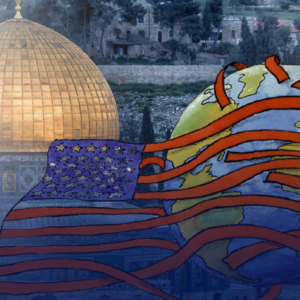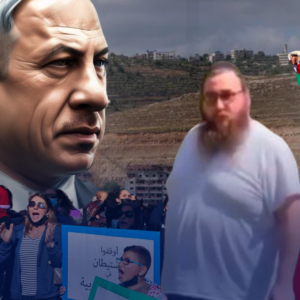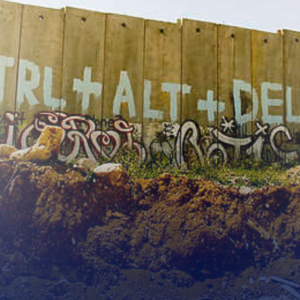All About Palestine IX: Palestinian Refugees and Palestinian Citizens of Israel

Part IX: Palestinian Refugees and Palestinian Citizens of Israel
Earlier in this report, we explained how the Israeli apartheid system has divided Palestinians into different groups for purposes of control. Palestinians are classified into five statuses or categories of rights, all of which are inferior to Jewish Israeli rights, in the following order of most rights to least: Palestinian Citizens of Israel, Palestinians in East Jerusalem, Palestinians in the West Bank, Palestinians in Gaza, and Palestinian Refugees. Part 6 of this report explained Palestinians in Gaza, Part 7 explained Palestinians in the West Bank, and Part 8 explained Palestinians in East Jerusalem. The following section will explain the statuses of both Palestinian refugees and Palestinian citizens of Israel.
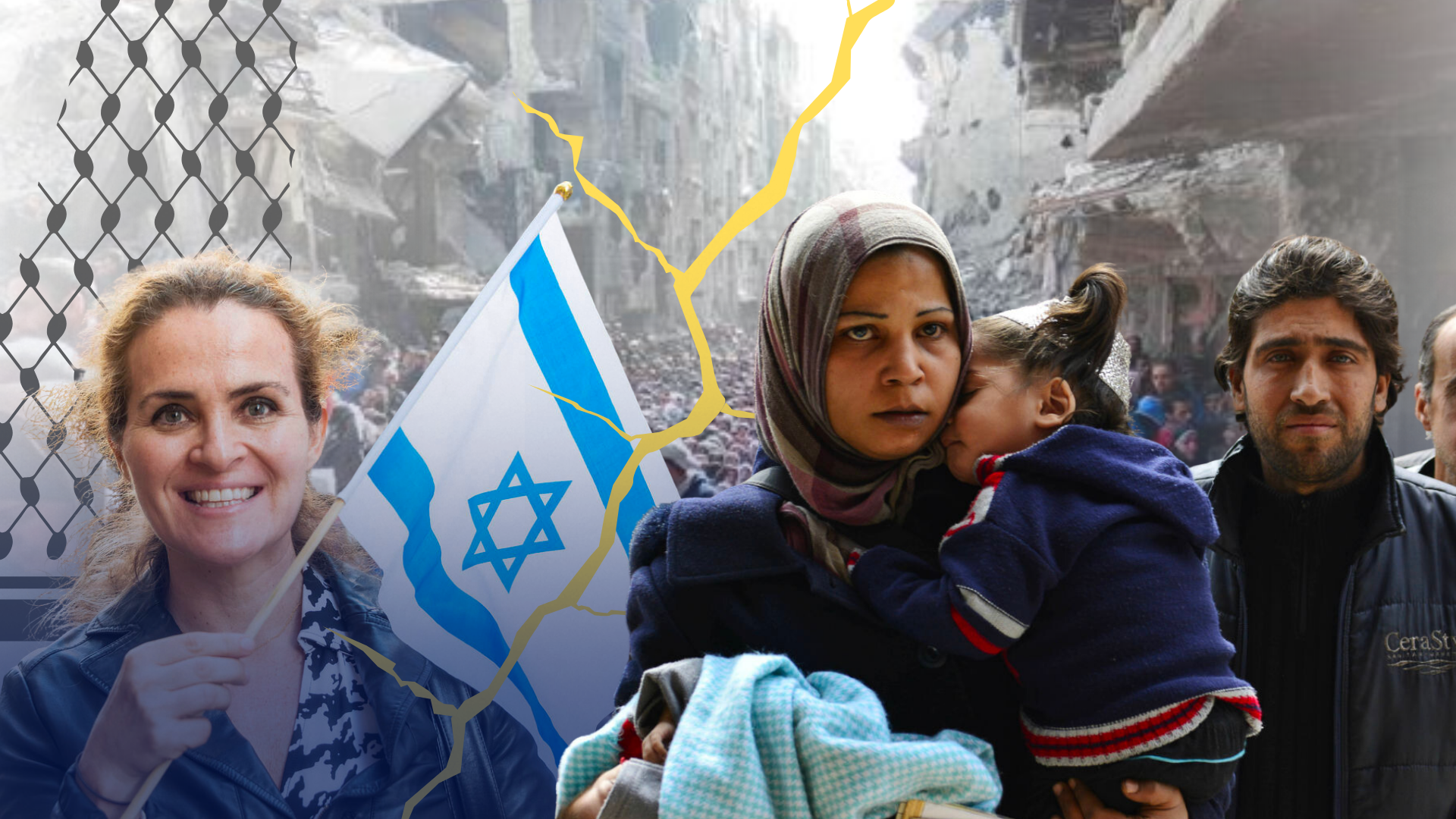
Part IX: Palestinian Refugees and Palestinian Citizens of Israel
Earlier in this report, we explained how the Israeli apartheid system has divided Palestinians into different groups for purposes of control. Palestinians are classified into five statuses or categories of rights, all of which are inferior to Jewish Israeli rights, in the following order of most rights to least: Palestinian Citizens of Israel, Palestinians in East Jerusalem, Palestinians in the West Bank, Palestinians in Gaza, and Palestinian Refugees. Part 6 of this report explained Palestinians in Gaza, Part 7 explained Palestinians in the West Bank, and Part 8 explained Palestinians in East Jerusalem. The following section will explain the statuses of both Palestinian refugees and Palestinian citizens of Israel.
Written by: Nadia Hojaij and Yahia Hassani | Copy Editors: Zainabrights | Design: Fatima El-Zein
Palestinian Refugees
“Transfer”
Since its inception, Zionism sought to establish a Jewish majority in a land where Palestinian Arabs were the overwhelming majority. This issue was of central focus throughout early Zionist conferences, and Zionists saw transfer, a euphemism for ethnic cleansing, as the solution. Transfer was to be carried out by forced expulsion and/or engineered voluntarily by a system of economic strain, the latter of which was propounded by Zionism’s founder, Theodor Herzl.
In 1895, Herzl wrote
We must expropriate gently. We shall try to spirit the penniless population across the border by procuring employment for it in the transit countries, while denying it any employment in our own country… expropriation and the removal of the poor must be carried out discreetly and circumspectly.”
In 1937, at the twentieth Zionist Congress, soon-to-be first Israeli Prime Minister Ben-Gurion stated
You are no doubt aware of the [Jewish National Fund’s] activity in this respect. Now a transfer of a completely different scope will have to be carried out. In many parts of the country new settlement will not be possible without transferring the Arab fellahin. Jewish power [in Palestine], which grows steadily, will also increase our possibilities to carry out this transfer on a large scale.”
In 1940, Director of the Jewish National Fund, Yosef Weitz, wrote
Amongst ourselves it must be clear that there is no room for both [Arab and Jewish] peoples in this country…There is no way but to transfer the Arabs from here to the neighboring countries…Not one village must be left, not one [Bedouin] tribe.”
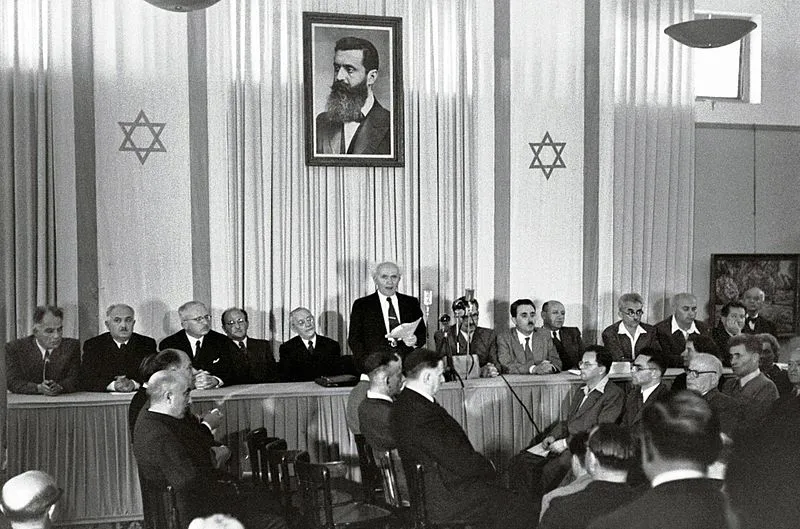
In his censored memoirs which were leaked to the New York Times in 1979, former Israeli Prime Minister Yitzhak Rabin recalled a conversation he had with Ben-Gurion in 1948 regarding the Palestinian population, in which Ben-Gurion waved his hand in a gesture which said “Drive them out!'" Rabin added, “I agreed that it was essential to drive the inhabitants out.”
Plan Delut
In 1948, Zionist leaders, including Ben-Gurion, adopted Plan Delut (Plan D), which was a detailed blueprint specifying the Palestinian population centers that would be forcibly depopulated. The plan called for the destruction of Palestinian villages and forced expulsion of the population outside the state’s borders. An unofficial body called the “Transfer Committee” was set up to oversee the systematic destruction of Palestinian towns and their repopulation with Jews. Zionist militias invaded Palestine, ethnically cleansed 530 villages, and forcibly expelled 750,000 natives in what became known as the Nakba.
Zionists colonized and usurped 78% of Palestine in order to create the State of Israel. Palestinians were forcibly displaced into impoverished refugee camps throughout the remaining 22% of Palestine and neighboring Arab countries. Palestinians physically carried what they could of their belongings and the rest were transported in trucks. Several hundreds died during the exodus from dehydration and exhaustion. In 1967, Israel occupied the remaining 22% of Palestine, consisting of the West Bank and Gaza, forcibly expelling an additional 350,000 Palestinians, many of which were expelled for the second time.
UNRWA
As of 2023, according to the UN, expelled Palestinians and their descendants amount to nearly 6 million officially registered refugees who are denied the right to return by Israel. They mostly live across 58 impoverished refugee camps throughout the West Bank (870K refugees), Gaza (1.7 million refugees), Jordan (2.3 million refugees), Syria (570K refugees), and Lebanon (490K refugees). These refugees do not include the millions of Palestinians in the diaspora around the world who are also denied the right to return. Over the years, refugee camps have transformed from canvas tents to prefabricated huts to low-quality urban dwellings.
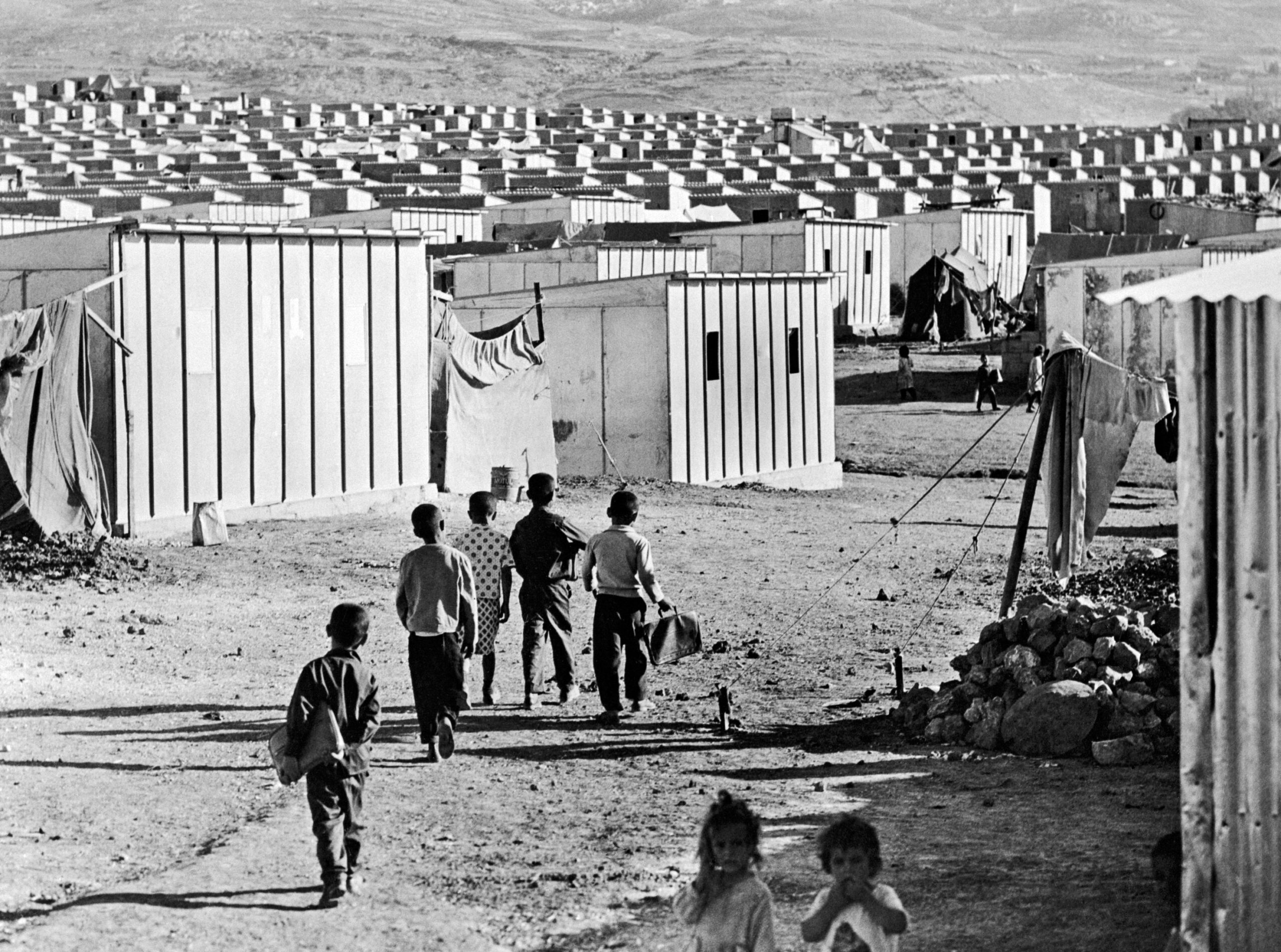
Since 1950, the UN has operated a United Nations Relief and Works Agency (UNRWA) to provide assistance and protection for Palestinian refugees. The UNRWA focuses on basic services such as food distribution, education, healthcare, and camp infrastructure and improvement. However, as the humanitarian needs continue to increase, the agency faces a continuous funding crisis as it is almost entirely funded by contributions from UN member states.
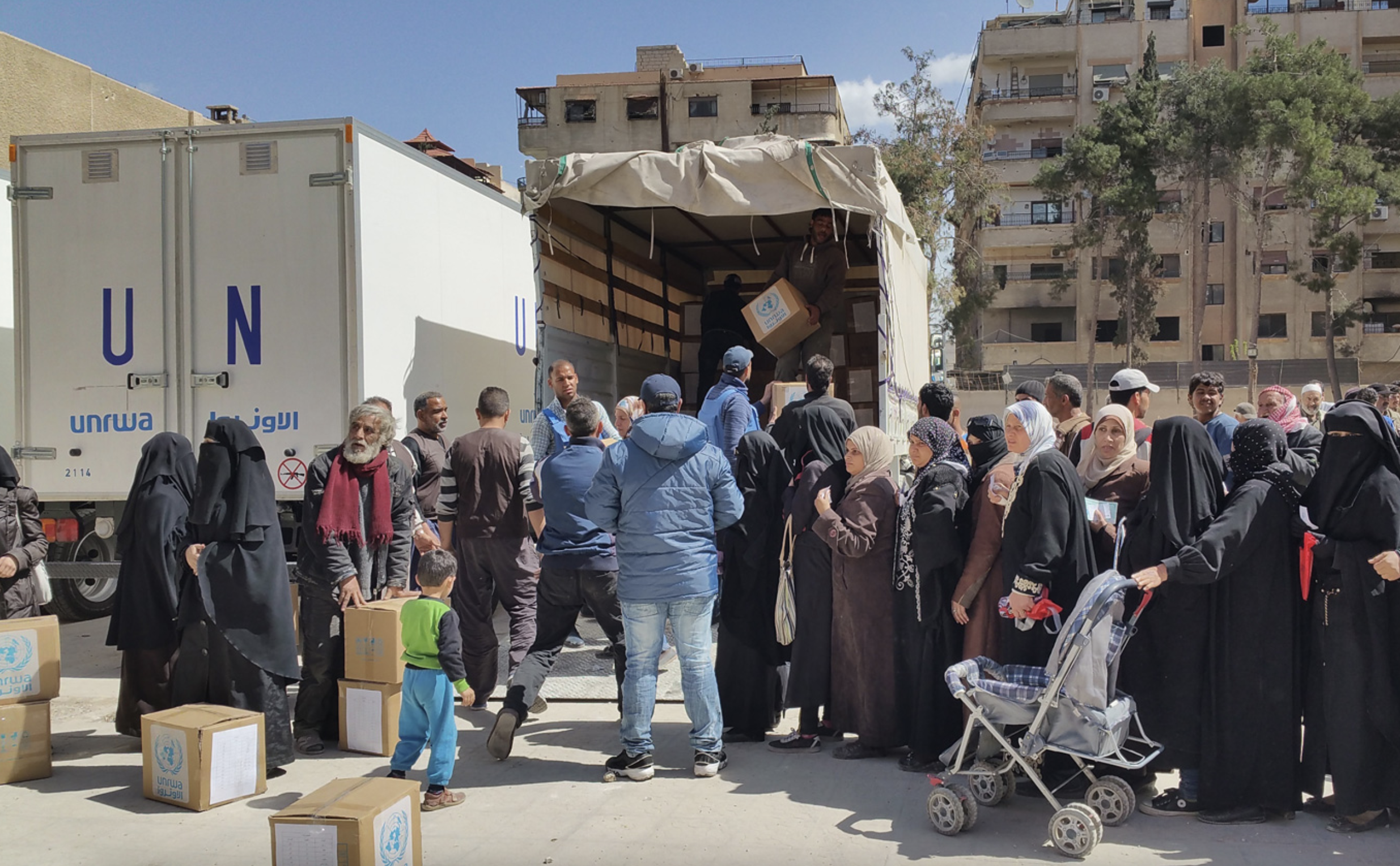
In 2017, Israeli PM Netanyahu said that UNRWA’s longevity had served to perpetuate and not solve the refugee problem. He stated “It is time for UNRWA to be dismantled” and urged the UN to “re-examine” its existence. In 2018, in its efforts to “disrupt UNRWA,” the Trump Administration cut all US funding which amounted to $300 million annually. It was the largest reduction in the agency’s history and led to a severe financial crisis. In 2019, 170 countries voted to renew UNRWA’s mandate, while only two – the US and Israel- voted against. The US resumed funding in 2021, which was offset by reductions in funding from other donors. In November 2021, UNRWA head Philippe Lazzarini warned of an “existential” crisis, reporting the under-funded agency had only raised 48% of the funds needed for their 2022 and 2023 budgets.
UNRWA was forced to delay salaries and cut benefits to 28,000 staff members, 90% of which are Palestinian refugees themselves. In 2022, other UNRWA directors reported “the situation is extremely serious and the crisis will continue” and they are in a “race against time.”
Refugee Camps
The dire conditions of Palestinian refugee camps vary depending on the conditions and status of their areas or host country.
In the West Bank, the entire population, including refugees, live under illegal Israeli military occupation, facing continuous restrictions on movement, home demolitions, forced evictions, arbitrary detention, and unlawful killings. In recent years, many refugee camps have faced continuous Israeli military incursions in the face of Palestinian resistance groups.
In Gaza, the entire population, mostly refugees, is illegally besieged by Israel through a land, air, and sea blockade, with 81% living in poverty, 63% food insecure and dependent on foreign aid, and 95% without access to clean water. During its military onslaughts over the years, Israel has committed many massacres in Gaza’s densely-populated refugee camps and UNRWA centers wherein thousands have been killed.
In Jordan, about three quarters of Palestinian refugees have been granted full citizenship. The majority of these Palestinians are from the West bank and were under Jordanian administration until 1967. However, there are over 600,000 Palestinian refugees, mostly from Gaza, who are not naturalized. Their access to public services and benefits are nearly non-existent. About 18% of refugees live within recognized refugee camps, which mostly resemble poor city suburbs, while other refugees live near the camps. They all live under similar sub-standard socio-economic conditions.
In Syria, the entire population, including Palestinian refugees, have been severely affected and displaced by the NATO-Gulf backed regime change ‘War on Syria’ in addition to the continued Israeli aggressions on the country. The US Caesar Act imposed crippling sanctions on Syria which have devastated both Syria and Lebanon’s economy, affecting both their citizens and refugees. Despite UNRWA’s cash assistance, a 2021 crisis monitoring survey showed that 82% of Palestinian refugees in Syria are still living in absolute poverty with less than $2 dollars a day. Palestinian refugees in Syria have many of the rights of Syrian citizens, including access to social services provided by the Syrian government.
In Lebanon, the entire population, including Palestinian refugees, have been severely affected by decades of Israeli aggressions on the country as well as Lebanon’s recent economic, fiscal, and monetary crisis. More than half the population live below the poverty line. Lebanon hosts the most refugees per capita in the world, as it also hosts over 1.5 million Syrian refugees. Refugees in Lebanon face limited employment opportunities and property rights due to the devastated state, collapsed government, and delicate confessional balance. As of 2023, 80% of Palestinian refugees live below the national poverty line, while data modeling confirmed that without UNRWA cash assistance poverty would stand at 93%.
Refugee camps suffer extreme overcrowding and lack of privacy, with some of the highest population densities in the world. In Jordan, the Baqa camp covers 1.4 sq km and hosts a population of 131,600 refugees. In Gaza, the Jabalia camp hosts 116,000 in only 1.4 sq km. In Lebanon, the Ein El Hilweh camp hosts 50,000 in only 0.3 sq km. In the West Bank, the Balata camp hosts 32,500 in 0.2 sq km. In Syria, the Neirab camp hosts 18,000 in 0.1 sq km. Camps suffer poor electric networks, poor sanitation, water leakages, sewage blockages, rodent infestation, and increased diseases. Palestinian refugees continue to suffer displacement, poverty, unemployment, inflation, and lack of security which lead to an increase in negative coping mechanisms such as child labor, drug abuse, violence, and psychological problems. The housing, infrastructure, and socio-economic status of these camps remain deplorable and continue to deteriorate, increasing tension, division, and despair.
Right to Return
Since its inception, the Israeli entity has continued to deny Palestinian refugees the right to return to their homes and villages. The right to return for all peoples is a common standard and core principle in the Universal Declaration of Human Rights (UDHR) proclaimed by the UN since its establishment. The UN has frequently insisted upon the right for Palestinian refugees to return. In 1948, the UN adopted Resolution 194 stating that refugees wishing to return to their homes should be permitted to do so as early as possible and that those who choose not to should be compensated for the properties they lost. This right was further reaffirmed by the UN General Assembly on more than 135 occasions. In 1969, the UN passed Resolution 2535, recognizing that the problem of Palestinian refugees has arisen from their denial of inalienable rights under the UDHR. In 1974, the UN approved Resolution 3236 which reaffirmed the right for Palestinian refugees to return to their homes and properties from which they have been displaced and uprooted. According to Amnesty International, Israel’s failure to respect the right to return is a flagrant violation of international law that has fueled decades of suffering on a mass scale for Palestinian refugees across the region.
The Palestinian refugee right to return continues to be the most important and contentious topic in the entire struggle for freedom in occupied Palestine. Every Palestinian party, from Fatah to Hamas, regardless of ideology, enshrined the right to return as their first and primary principle in their declarations and charters. The Israeli entity rejects such a right on the basis that it would significantly alter its Jewish majority, which goes against the entire ethos of Zionism and the Zionist State’s decades long efforts of ethnically cleansing Palestine. The Israeli entity continues to deny responsibility for Palestinian refugees and claim they should be absorbed in their host countries. However, for many Palestinians and the Arab host countries, absorbing Palestinian refugees would be tantamount to legitimizing the Zionist usurpation of Palestine, capitulating to the Israeli entity, surrendering the Palestinian plight, allowing Israel to evade its responsibility towards the refugees, and emboldening Israel to continue its ethnic cleansing of occupied Palestine since refugees would be easily absorbed. According to the UN, the plight of Palestinian refugees remains the longest unresolved refugee crisis in the world.
Palestinian Citizens of Israel
In 1948, Zionist militias forcibly expelled about 750,000 indigenous Palestinians during the Nakba in order to ensure a Jewish majority state. However, about 150,000 Palestinians managed to remain or were internally displaced within the usurped borders of Palestine that became known as Israel. Palestinians became an involuntary minority who were forced to live in segregated ghettos and denied the right to return. Most of their homes and properties were replaced by Israeli settlers or state-backed bodies such as the Jewish National Fund. Palestinians within Israel lived under repressive military rule until 1966, subjected to movement restrictions, curfews, and detention, before eventually being granted Israeli citizenship. As of 2023, Palestinian citizens of Israel amount to nearly 2 million people and comprise 21% of the Israeli population. However, they face systemic inequality with over 65 discriminatory laws that render them second-class citizens.
Identity
Palestinian citizens of Israel are often referred to as “1948 Palestinians” or “48-ers” for remaining in the lands colonized in 1948. In 2017, polls showed the majority of Palestinian citizens refer to themselves as simply “Palestinian” in order to reject Israeli identity. Israelis often refer to them as “Arab-Israeli” or “Arabs”, which many critics regard as an attempt to erase Palestinian identity. In 1969, Israeli PM Golda Meir, who was infamous for denying the existence of Palestinians and their ethnic cleansing, stated “It was not as if there was a Palestinian people in Palestine and we came and threw them out and took their country away from them. They did not exist.” In 2023, Israeli finance minister Smotrich stated “There is no such thing as Palestinians because there’s no such thing as the Palestinian people.“
As of 2022, about 83% of Palestinian citizens in Israel are Muslim, with 8% Christian, and 9% Druze. They reside primarily in the northern Galilee, the middle “Little Triangle,” and southern Naqab region. Most cities and towns within the Israeli entity are either Jewish or Arab majority, with seven “mixed” cities including Haifa and Lydd where Arabs and Jews work and live together. However, mixed cities usually have segregated neighborhoods. In Lydd for example, walls separate wealthy Jewish areas from impoverished Arab neighborhoods. The geographic segregation exists due to Israel’s legacy of restrictions, socio-economic disparities, prejudices, and discriminatory policies towards non-Jewish Israelis that outline where they can live, work, and seek an education. In 2021, an Israeli institute survey reported that only half of Jewish Israelis thought it was better for the two communities to live together, compared to around 80% of Arab citizens. Palestinian citizens struggle with the complex dilemma of Israeli assimilation for a higher standard of living versus Palestinian nationhood and the struggle for liberation. They are often looked down upon by the diaspora for accepting Israeli citizenship while simultaneously viewed as traitors by many Jewish Israelis. Palestinian citizens of Israel participated in the first and second intifada and often protest discriminatory policies within the Israeli entity and the occupied territories.
Systemic Inequality
Adalah, meaning “Justice” in Arabic, is an Arab-run human rights organization and legal center in Israel which focuses on promoting and defending the rights of Palestinian citizens in particular. Despite Israel continuing to promote itself as the “only democracy in the middle east,” Adalah has compiled a database of over 65 Israeli laws that discriminate against Palestinians, either directly or indirectly, based solely on their ethnicity. They disparately impact Palestinian citizens in nearly all areas of life including citizenship, politics, land, housing, education, culture, religion, employment, healthcare, marriage, and due process. These laws are part of an effort by Israel to maintain its Jewish majority and dominance over Palestinians by marginalizing them politically and limiting their growth in population and villages. A 2010 report by the US State Department documented similar issues of “institutional, legal, and societal discrimination” toward Palestinians in Israel.
Racism towards Palestinian Muslims and Christians runs rampant in Israeli society, which is the natural outcome of an entity founded on racial exclusion after forcibly expelling hundreds of thousands of indigenous Palestinians during the Nakba. There is plenty of footage of Israelis calling for the death of Arabs, insulting the Prophet Muhammad, engaging in hate crimes towards Palestinians, and desecrating Muslim and Christian holy sites. A 2022 survey by the Israeli Democracy Institute revealed that about 60% of Israeli Jews prefer segregation with Arabs.
Land, Property, and Housing Discrimination
In order to continue maximizing Jewish control over Palestinian land in Israel, a process known as “Judaization,” many discriminatory laws focus on restricting Palestinian access to land and housing, which include confiscating property and demolishing structures. The Law of Return (1950) grants every Jewish person in the world the right to obtain citizenship in Israel but denies the right of return to Palestinian refugees. The Absentee Property Law (1950) defines all Palestinians, including citizens, who were expelled or internally displaced during the Nakba as absentees and their property as absentee property. The law was used to confiscate millions of dunams of land later used for Jewish settlement. Approximately 350 out of 370 Israeli settlements established between 1948 and 1953 were built on confiscated absentee Palestinian property. The Admissions Committees Law (2011) allows hundreds of Israeli settlements built on state land to select applicants based on their “social suitability,” which in practice is used to filter out Palestinians. The Kaminitz Law (2017) increases enforcement and penalization of building offenses which expedite the process of Palestinian home demolitions. These homes are forced to be built without difficult-to-obtain permits due to discrimination in the planning and building system. The Planning and Building Law (1965) designated several Palestinian Bedouin communities in the southern Naqab region as illegal and set for demolition. In 2019, Israel announced a plan for the Naqab that would forcibly transfer 36,000 Palestinian Bedouin citizens in order to expand military training areas and “economic-development” projects.
In 1976, the Israeli government approved plans to ‘Judaize’ the Galilee by confiscating 20 sq km of Palestinian land which were to be transferred to Jewish Israelis. The issue sparked outrage leading to general strikes, protests, and demonstrations. The Israeli army raided numerous Palestinian villages with tanks and military vehicles in order to violently suppress the protests. Israeli forces shot and killed six unarmed Palestinian citizens, wounded a hundred, and arrested hundreds more. The incident became known as “Land Day” and is commemorated annually by Palestinians to protest Israeli land theft.
In 2018, Israeli justice minister Shaked stated,
I think that ‘Judaizing the Galilee’ is not an offensive term. We used to talk like that. In recent years we’ve stopped talking like that. I think it’s legitimate without violating the full rights of the Arab residents of Israel… There are places where the character of the State of Israel as a Jewish state must be maintained and this sometimes comes at the expense of equality.” In 2019, newly appointed Israeli transportation minister Smotrich declared, “I intend to Judaize the Galilee.” In 2022, Israel approved plans to enforce the Judaization of the Galilee and Naqab. The plan offered economic benefits and discounts to Israeli Jews to encourage them to move into the Palestinian populated areas.
In 2020, Human Rights Watch published a report on Israel’s discriminatory land policies, concluding
Decades of land confiscations and discriminatory planning policies have confined many Palestinian citizens to densely populated towns and villages that have little room to expand. Meanwhile, the Israeli government nurtures the growth and expansion of neighboring predominantly Jewish communities, many built on the ruins of Palestinian villages destroyed in 1948.”
Economic and Social Discrimination
The Nationality and Entry Law (2003) bans family unification between Palestinian citizens of Israel and their spouses from the occupied Palestinian territories. Meaning, it prevents these spouses from gaining residency or citizenship status through marriage. This forces thousands of Palestinians to either leave Israel or live away from their families. Meanwhile, the Law of Return (1950) was amended in 1970 to not only grant Israeli citizenship to Jews, but also to their non-Jewish children, grandchildren, and spouses, and to the non-Jewish spouses of their children and grandchildren.
The Economic Efficiency Law (2009) gives the government sweeping discretion to designate “National Priority Areas” and to allocate vast resources for their development. It does so in a way that systematically excludes Palestinian communities. According to an Israeli institute statistical report on Arab society in 2021, Arab citizens have a lower standard of living, poorly funded schools, lower levels of education, lower earning salaries, higher unemployment rates, and higher poverty rates as compared to Israeli Jews. Arab citizens had lower life expectancies and twice as higher infant mortality rates when compared to Jews. Arabs are employed mainly in construction, manufacturing, retail, hospitality, and transport services. In 2018, nearly half of Arab families were living below the poverty line.
The vast majority of Palestinian citizens are exempt from military service for historical and political reasons, although some still enlist. As a result, they miss out on extensive financial benefits from the state including education assistance and discounted permits for building homes and owning land. The Benefits for Discharged Soldiers Law (2008) allows all higher education institutions to consider military service when determining applicants’ eligibility for financial assistance. It is used as a proxy to channel extensive benefits to Jewish Israelis using state funds. The Nakba Law (2011) strips state funding from any public entity, including educational institutions, that commemorates the Nakba.
Political Discrimination
Palestinian citizens can vote, hold office, and work in foreign service. Many have held lower level positions in civil service including mayor and judges in lower courts. However, this has not translated to senior positions which have decisive influences on public policy. Between 2017 and 2020, Arabs constituted less than 1% of senior civil positions. Historically, Palestinian citizens have had little influence on Israeli policy. Therefore, they focus mostly on civil rights issues. Their main representation comes from the Arab-Jewish communist party, Hadash, which offers space for organizing with left-wing and non-Zionist Jews for Palestinian rights.
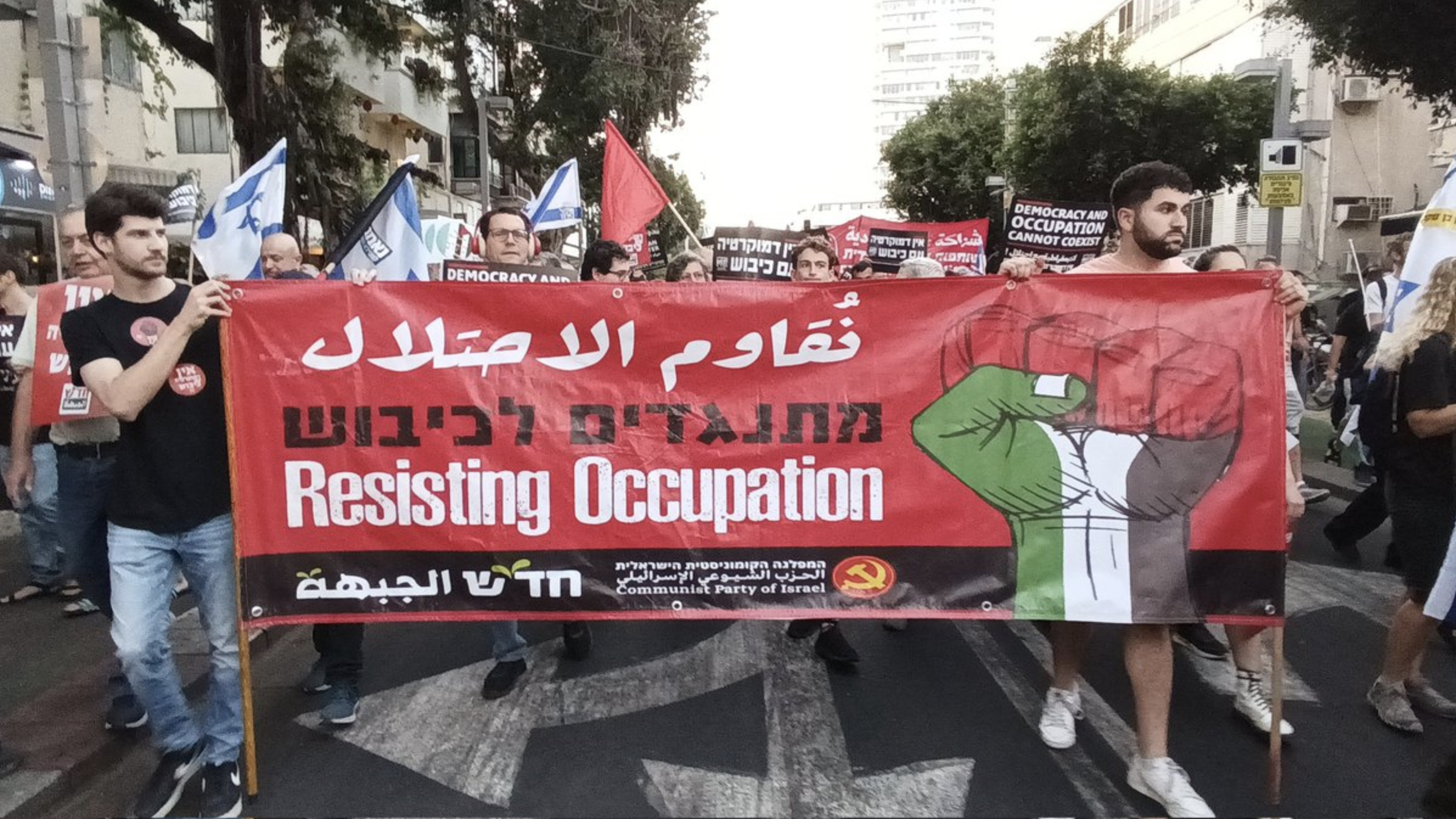
Hadash has formed a coalition, known as the Joint List, with the other three Arab parties consisting of the secular Arab nationalist parties Ta’al and Balad, and the Islamist United Arab List (UAL). UAL, also referred to as Ra’am, left the coalition in 2021 due to the other parties liberal values and secular tendencies. There are continued efforts by Israeli parties, particularly right-wing, to ban, shut down, and limit the political power of Arab parties. The Expulsion Law (2016) allows for the expulsion of Arab members of the Israeli parliament (Knesset) by majority vote on ideological grounds, such as if they support resistance against occupation. Arab citizens have never held more than fifteen seats in the 120-seat Knesset. In 2023, Arab parties held ten seats.
Nation-State Discrimination
In 2018, Israeli parliament passed The Jewish Nation-State Law that enshrines Jewish supremacy over Palestinian citizens by guaranteeing the ethnic-religious character of Israel as exclusively Jewish. It officially defines Israel as the nation-state of the Jewish people, becoming the only supposed democratic constitution in the world to designate the state’s identity on racial grounds. The law codified discriminatory policies into constitutional status that entrenches Jewish privilege. It has distinct apartheid characteristics that anchor systemic inequality, discrimination and racism against Palestinians. The Nation-State Law further cements the idea that Palestinian are indeed second-class citizens.
In 2019, Israeli PM Benjamin Netanyahu stated,
Israel is not a state of all its citizens…according to the basic nationality law we passed, Israel is the nation state of the Jewish people – and only it.”
SOURCES
- What Price Israel, Alfred Lilienthal, Pages 148-150
If you value our journalism…
TMJ News is committed to remaining an independent, reader-funded news platform. A small donation from our valuable readers like you keeps us running so that we can keep our reporting open to all! We’ve launched a fundraising campaign to raise the $10,000 we need to meet our publishing costs this year, and it’d mean the world to us if you’d make a monthly or one-time donation to help. If you value what we publish and agree that our world needs alternative voices like ours in the media, please give what you can today.

